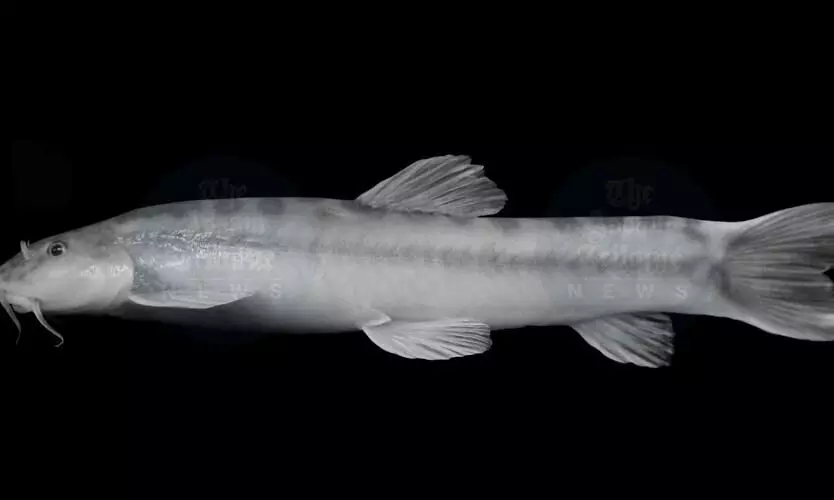
Shillong, Aug 5: A new species of loach fish has been discovered in the caves of the South Garo Hills district of Meghalaya.
Touted as “one-of-its-kind in the world” by researchers, the new species has been named Schistura sonarengaensis, after the place it was discovered.
“I believe this fish is a one-of-its-kind in the world. We were scanning the Sonarenga, Nakama, and Chiabol caves in the South Garo Hills from March 2022 before making this discovery,” said Khlur Mukhim, the lead author of the research and principal of Lady Keane College, Shillong.
The findings were published in a peer-reviewed international journal of fish biology, released by the Fisheries Society of the British Isles.
According to the study, the distinctive feature of Schistura sonarengaensis is its eyes. It has 13–26 vertically elongated to circular mid-lateral black blotches (brownish in life) overlaid on a greyish-black mid-lateral stripe on a dull white or pale-beige (golden brown in life) body.
“Loach fish dwell in deep waters and are found across the rivers in Southeast Asia. This new species inhabits both the nearby river systems, Surma and Meghna, and the caves,” said Mukhim.
Additionally, genetic molecular analysis has confirmed that this species is distinct and has not been reported from anywhere else in the world, he added.
The discovery is the result of over two years of extensive research expeditions in the Garo Hills, led by a team of nine researchers from Lady Keane College, Gauhati University, and the National Bureau of Fish Genetic Resources, Lucknow (NBFGR).
The research was funded by NBFGR under the Indian Council for Agricultural Research, Mukhim informed.
Recently, the South Garo Hills district has been making headlines for its rich fauna.
On July 2, a resident of Kumligaon village achieved a remarkable feat by capturing a rare Sucker Mouth Catfish using a fishing net.
Known for its distinct cat-like coloration, the fish is rarely seen. The incident occurred as floodwaters surged through the region, highlighting both the resilience of local residents and the unique biodiversity of Kumligaon.
